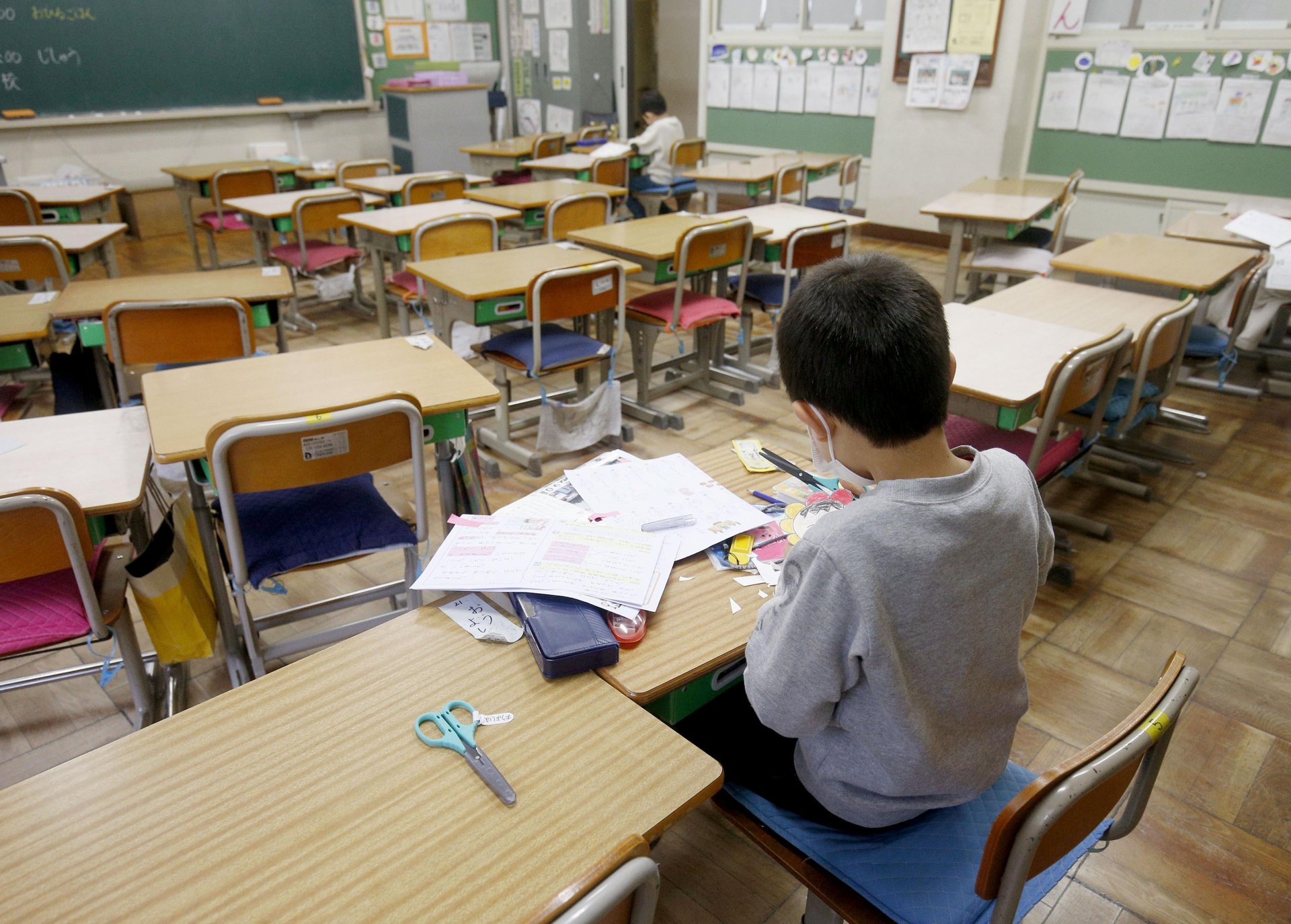Should schools close when coronavirus cases are still rare?
As the Covid-19 virus expands its footprint, some schools around the globe have made the difficult choice to close.


As the Covid-19 virus expands its footprint, some schools around the globe have made the difficult choice to close.
Last Thursday (Feb. 27), Japan announced the closing of all of its schools. Hong Kong did the same in January. The UK Department for Education won’t disclose how many schools in the UK have closed, but at least 15 have, many on the back of students or staff returning from winter break after skiing in Northern Italy. Kuwait, Lebanon, Bahrain and Iran have also had closings.
Those decisions can be especially challenging because so far, the novel coronavirus hasn’t infected children at high rates. According to an analysis of 44,672 confirmed cases of Covid-19 in China, fewer than 2% occurred in children under the age of 19—and no deaths have occurred in those younger than 10. So as administrators and public health officials make these calls, they’ll have to balance the trickle of information about health risks against the potential impacts on the community.
Some research has shown that closing schools can be helpful in reducing transmission among children. In one analysis published in BMJ Open examining 79 papers—22 covering seasonal flu and 57 from pandemic influenza—researchers concluded that “school closures can potentially reduce transmission during an influenza outbreak, even in the absence of other interventions, although the optimal school closure strategy is unclear.”
Why is it unclear? In part, because tracking the impact of school closures is so tricky. Sometimes individual schools close and other times whole systems do; some close before the peak of an outbreak and some after; some close as a precaution and some in reaction to outbreaks. Schools can close while kids receive antivirals or vaccines, or in concert with strong efforts to increase “social distancing,” making it hard to know which change is impacting transmission.
And across a variety of countries and viruses, the results of closures have been mixed. Closing schools for more than two weeks was associated with lower transmission rates in Hong Kong (seasonal and pandemic flus) and England (H1N1 in 2009), but not in Peru (pandemic) or the US (seasonal).
In other words, it’s messy.
School administrators might think to look to the 2009 outbreak of H1N1, or swine flu, for guidance. Some UK schools were closed in the wake of that outbreak, which may have helped in slowing transmission between kids. But there’s a critical difference between the H1N1 outbreak and the new coronavirus: The rate at which kids are infected.
“The sensitivity of the 2009 pandemic to school closures probably reflects the high attack rates in children compared with adults,” the BMJ study said. “Outbreaks in which children are less affected”—like Covid-19, perhaps—”might be less sensitive to school closure.”
With such unclear precedent, schools must independently consider the trade offs between being cautious and facing the disruption of having children home from school, with implications for children’s education and their parents’ ability to work. According to the Lancet, if all UK schools closed, 30% of health and social care workers would be out of commission—which could compound negative effects on the community’s financial health.
Keeping kids out of school also has impacts on their community’s physical health. David Heymann, professor of infectious disease epidemiology at the London School of Hygiene and Tropical Medicine, says that when schools are closed for seasonal flu or pandemic flu, it’s because kids typically have lower immunity than adults, and can often carry infections home to their families.
But since we are lacking information about how the new coronavirus affects children, it’s harder to make a call. As yet, it’s unclear whether children are getting infected at lower rates or just not showing strong symptoms.
Last Thursday, Japan’s Prime Minister Shinzo Abe asked all the country’s schools to close for about a month, saying he was “putting a priority on children’s health and safety” and trying to prevent the risk of outbreaks from kids and teachers gathering daily (Japanese schools end in March and restart in April).
Public Health England is advising English schools not to close, but the decision lies with head teachers. Some are doing so as a precautionary measure after staff or students were exposed, or confirmed to have contracted the virus. In the UK, official government guidance for educational settings says if a pupil or member of staff is confirmed as having coronavirus, anyone who has been “in close face-to-face or touching contact, including those undertaking small group work (within 2m [6ft] of the case for more than 15 minutes)” should self-isolate at home, or within their boarding school dormitory room, for 14 days”.
No matter what choice they make, school administrators have a role to play in managing the fears of parents and students. Jo Wooley is the head of St. Mary’s Tetbury, a primary school that closed after a staff member was infected in Italy. “Suddenly coronavirus is very close to us all and naturally our first thought is for our children and how we can protect them,” she wrote to her school. “It is clear from the many messages I have received and the activity on social media that there is a huge amount of anxiety amongst our parent body and the wider community and that is understandable.”